An Ode to Roadside Kitsch
I thought that I would write an ode / To the kitsch that sits along the road
An Ode to Roadside Kitsch
As some of you may know, I am currently somewhere along a meandering road trip across the western United States that I undertook with my father a few days back. The following is one reflection that has sprung inexplicably to my mind over the course of the trip.
“Dad, pull over into that coffee shop. I need to write for an hour or I’ll go crazy.”
A Tale of 3 Sculptures
Just a few short miles from the geographical center of the United States sits a town that looks far from extraordinary. Cawker City, Kansas, besides providing fodder for more than a few adolescent puns, would probably be languishing like many other small communities across rural America – victims of urban sprawl and the modern workforce and the interstate system. I may write more seriously about this sad development at a later date. In the meantime, you can just go read Wendell Berry. Or go watch the astute sociological commentary film Cars.
It’s a one-stop town that would otherwise be a zero-stop town.
But Cawker City has continued to draw travelers while nearby towns have vanished completely. And for one reason – or perhaps I should say 8,507,430 feet of reasons. It is home to The World’s Largest Ball of Twine. It was begun in 1953 by local farmer Frank Stoeber, who, at first, just needed a place to store his twine (don’t we all?) but who soon found the spirit of the artist rising within him.1
Several hours of wheat fields to the northwest sits a roadside attraction that is perhaps the quintessential picture of Americana.
Across the eternal fields of Nebraska, in an area that is otherwise wholly farmland, you can glimpse it across the horizon for miles as you inch closer. Otherworldly, grey pillars jut into the sky, arranged in a geometric circle that whispers of fireside ceremonies and alien encounters and the secrets of the universe. You’d think you were approaching Stonehenge.
And you’d be darn close, because you are in fact approaching Carhenge, a memorial project begun by Native Nebraskan Jim Reinders in 1982. It consists of 39 antique automobiles, buried partway into the earth, standing against the sky, and arranged in identical portions to Stonehenge. Model-Ts resting upon ‘67 Chevys. Mustangs burrowed into the ground like the sword in the stone.
If you were a character in the movie Cars, you’d be horrified by the display of atrocity. But as a character in the story of human history, you can’t help but be fascinated.
Continue your wandering way northward, and you’ll find something much better known but no less strange. Nestled high above the forests and badlands of the Black Hills, towering above us mere mortals: a gargantuan carving of the faces of four politicians, blasted, through the twin powers of dynamite and the American Spirit, into the side of a South Dakotan Cliff.
If you were a character in Cars, you’d again be horrified – but this time wondering what on earth these massive creatures with grotesquely misshapen headlights were even supposed to represent. And after reading the descriptors, you’d be only slightly less perplexed and exclaim, “That’s the strangest looking Lincoln I’ve ever seen!”
But as a member of the human race, you can’t help but gawk and take inordinate numbers of pictures that don’t quite do it justice and probably wear tie-dye shirts that match with the rest of your bus tour group.
I speak, of course, of Mount Rushmore.
I’d never thought of it this way before, but the nature of my recent travels awakened me to the fact that it’s nothing more (or, rather, nothing less) than America’s greatest piece of roadside kitsch.
Just Do Something!
G.K. Chesterton once said that the most incredible thing about miracles is that they happen.
What is incredible to me about each of these three items is that they exist. Someone made them.
Someone realized that they had free will, darnit, and that rather than going to work and clocking in and clocking out and sleepily watching whatever iteration of sportsball was on that night every day for the rest of their individual slice of the miracle of existence, they could instead start rolling up a ball of twine, or parking grandpa’s Buick out in the field, or taking a chunk out of the mountain so as to liken it to Theodore Rooselvelt — and letting the Good Lord take care of what might happen next.
Honestly, really weird. But they did it. And now tourists on meandering family road trips through the Midwest can stop, make “Cawker” jokes, pose next to Model-Ts, get a drive-by lesson in U.S. history, and realize that they, too can make something of their lives – even if what they make is just a ball of twine.
That is perhaps the most amazing thing, to me, about these kinds of insane projects. Art spawns other art.
Reinders’ original automobile work has since been complemented by various other assorted vehicular sculptures known as the Car Art Reserve.
Mount Rushmore, in addition to proliferating roadside stands of salespeople and yoga junkies, also led to the creation of the cinematic classic National Treasure 2: Book of Secrets — which I have written about at length elsewhere.
But perhaps the most legendary story of communal art inspiration I’ve encountered spins out of the Cawker twine ball. At one point, the resident Cawkers caught wind that some impious Minnesotans were attempting to weave a rival ball up North.
The Kansans banded together as a community and added so much twine that no one would even dare consider trying to compete with their ball ever again.
Ball truly do not lie.
Wrapped up (pun intended) in all of this are the questions of high art and low art and beauty and quality and pretension. I am happy to address those threads at a later date. Don’t try me. I just might.
But for now, I will just note one of my favorite sentiments from perhaps the patron saint of my own artistic project, G.K. Chesterton. And that it’s a fitting sentiment for my writing, I’ll admit as quickly as anyone: anything worth doing is worth doing badly.
And I’ll supplement it with a line from T.S. Eliot – a line with which I persistently spam my Substack followers via the Notes feature:
For us, there is only the trying. The rest is not our business.
This, to me, is the chief beauty of art and culture: it is, quite literally, creating something out of nothing. God did it on the first day of creation. A few days later, He made us in His image, and we’ve been taking up the mantle ever since.
Creativity is contagious. And it just might save the world. Or give people a much-needed bit of entertainment on a road trip pee break.
Either way, worth it.
Ode upon the Road
I will leave you dear reader, with an original, rhymed benediction that I hope is befitting of my subject matter:
I thought that I would write an ode
To the kitsch that sits along the road
To the kitsch that by the highway sits
To the kitsch that looms above the ditch.
So here’s to those with hairbrained notions
Who make things of momentary emotions
Who carve stone Presidents with noses
Large enough to smell the nation’s roses
Who wind their twine in stacks and stacks
And make stones out of Cadillacs.
I sat me down to write this ode
As I was cruising down the road
My passenger had not the heart to ask
If I’d the brain to multitask.
And so inspired by roadside kitsch,
I wrote my way into a ditch.
If someone helps, I won’t complain;
It looks as if it soon will rain.
But now it seems my car won’t start;
I’ll leave it here – a work of art.





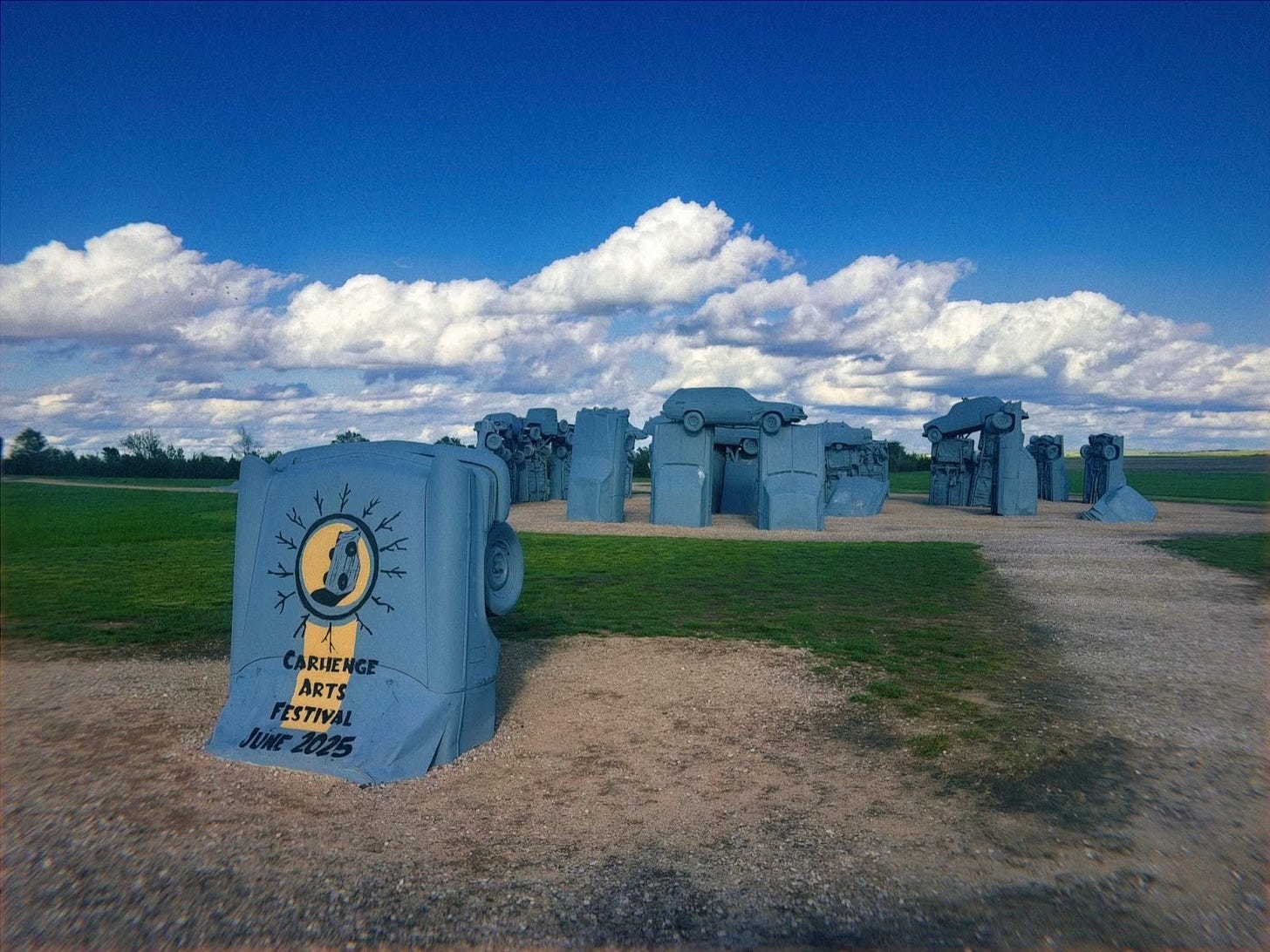
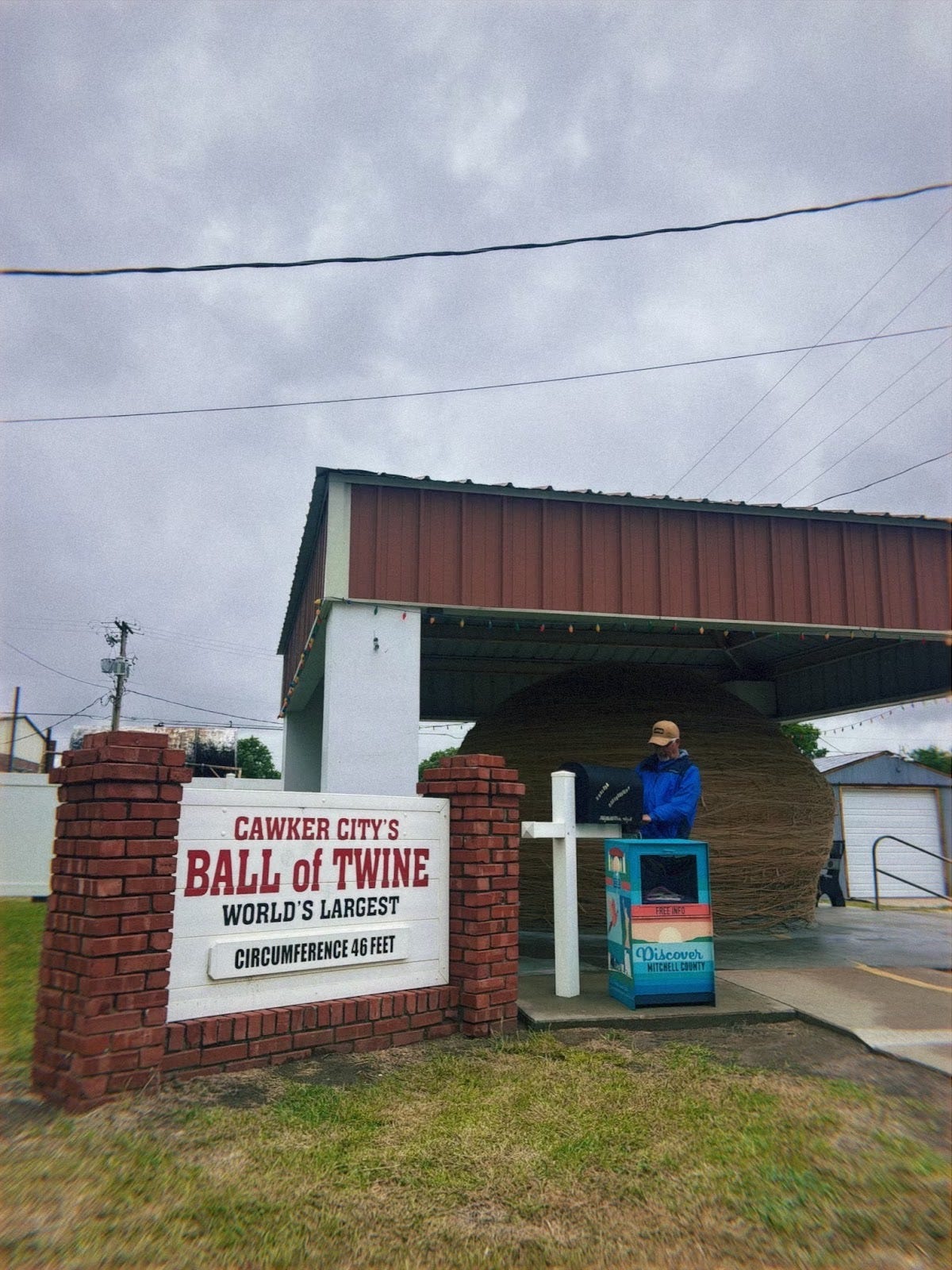
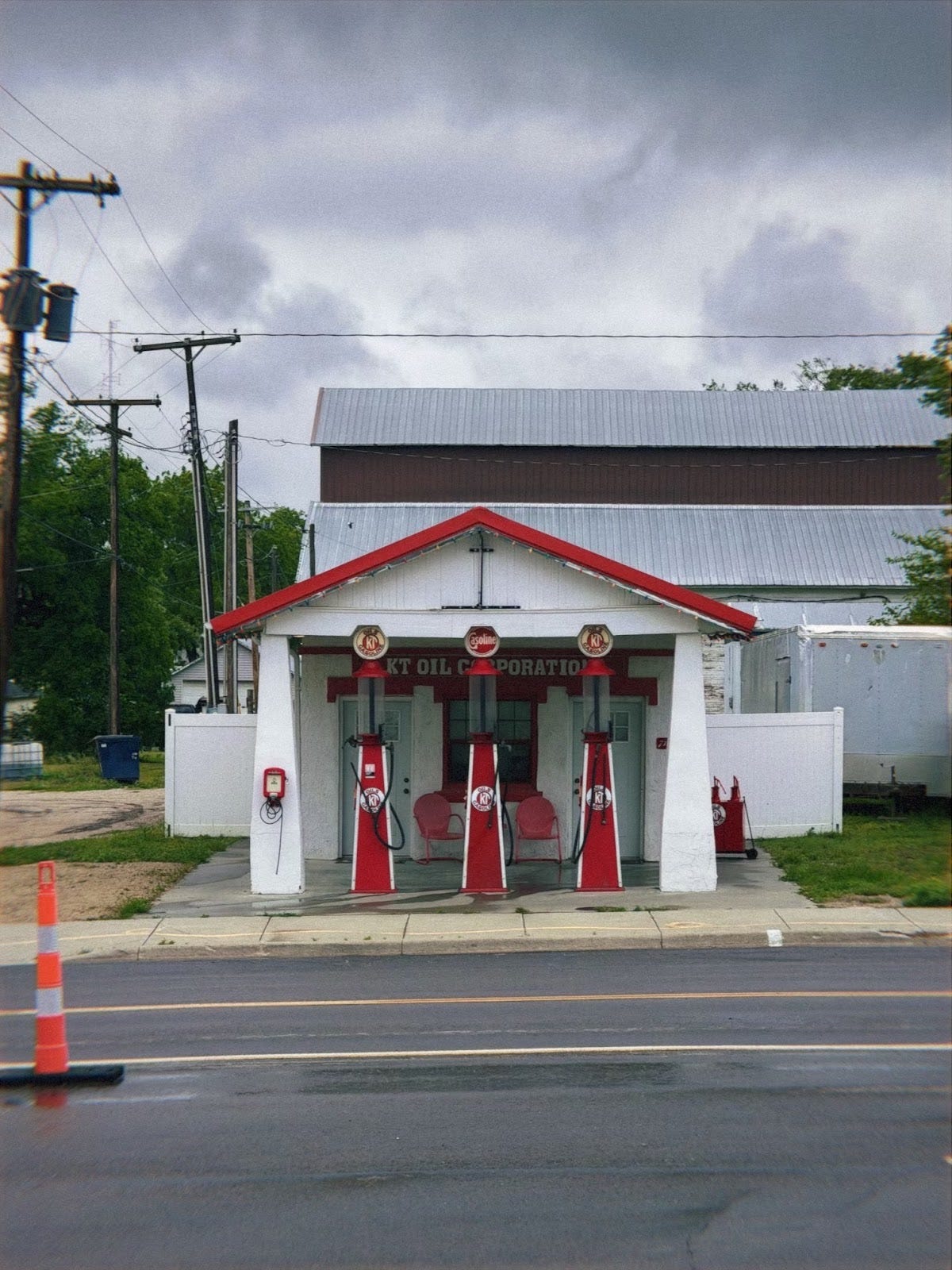
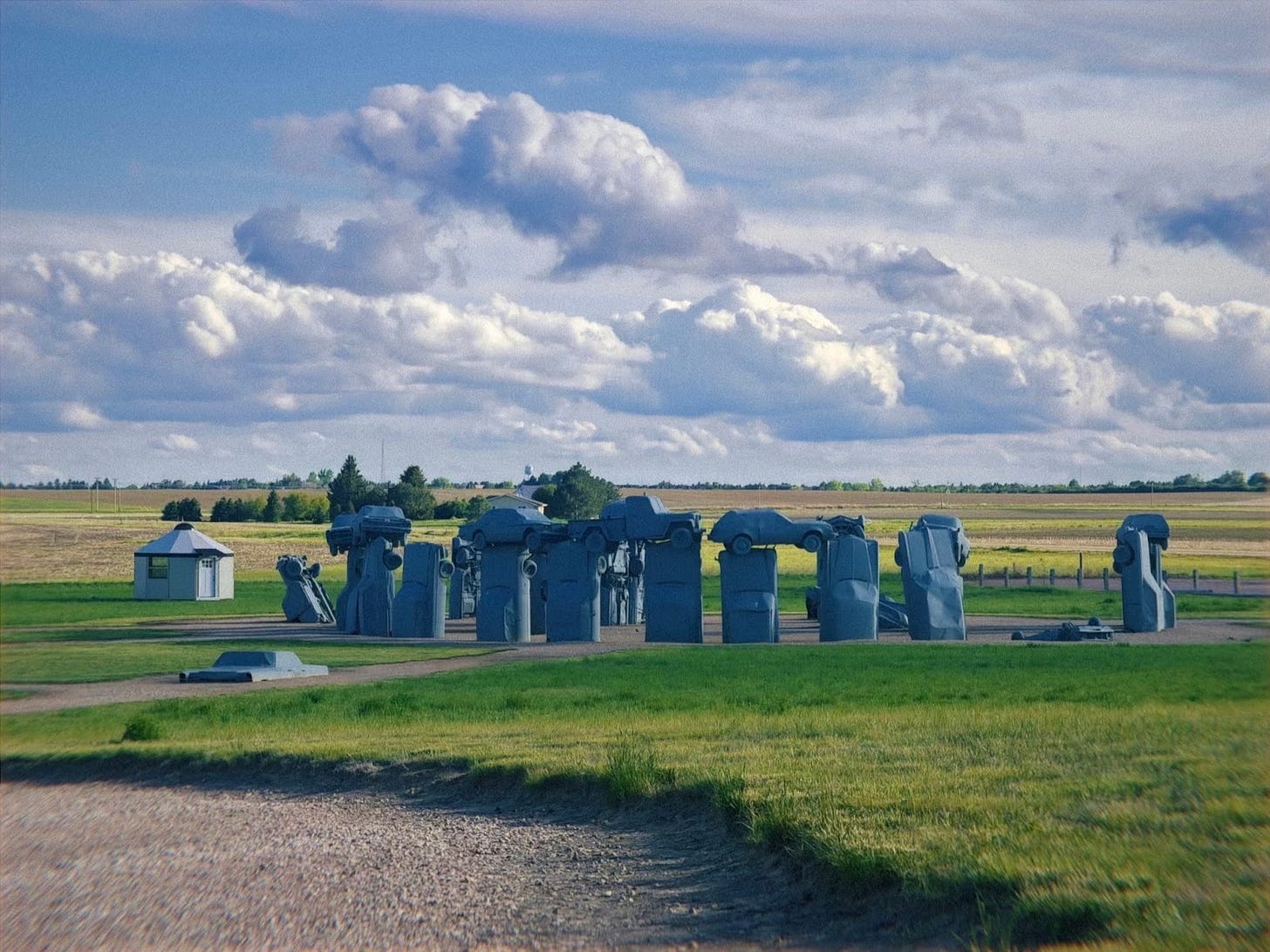
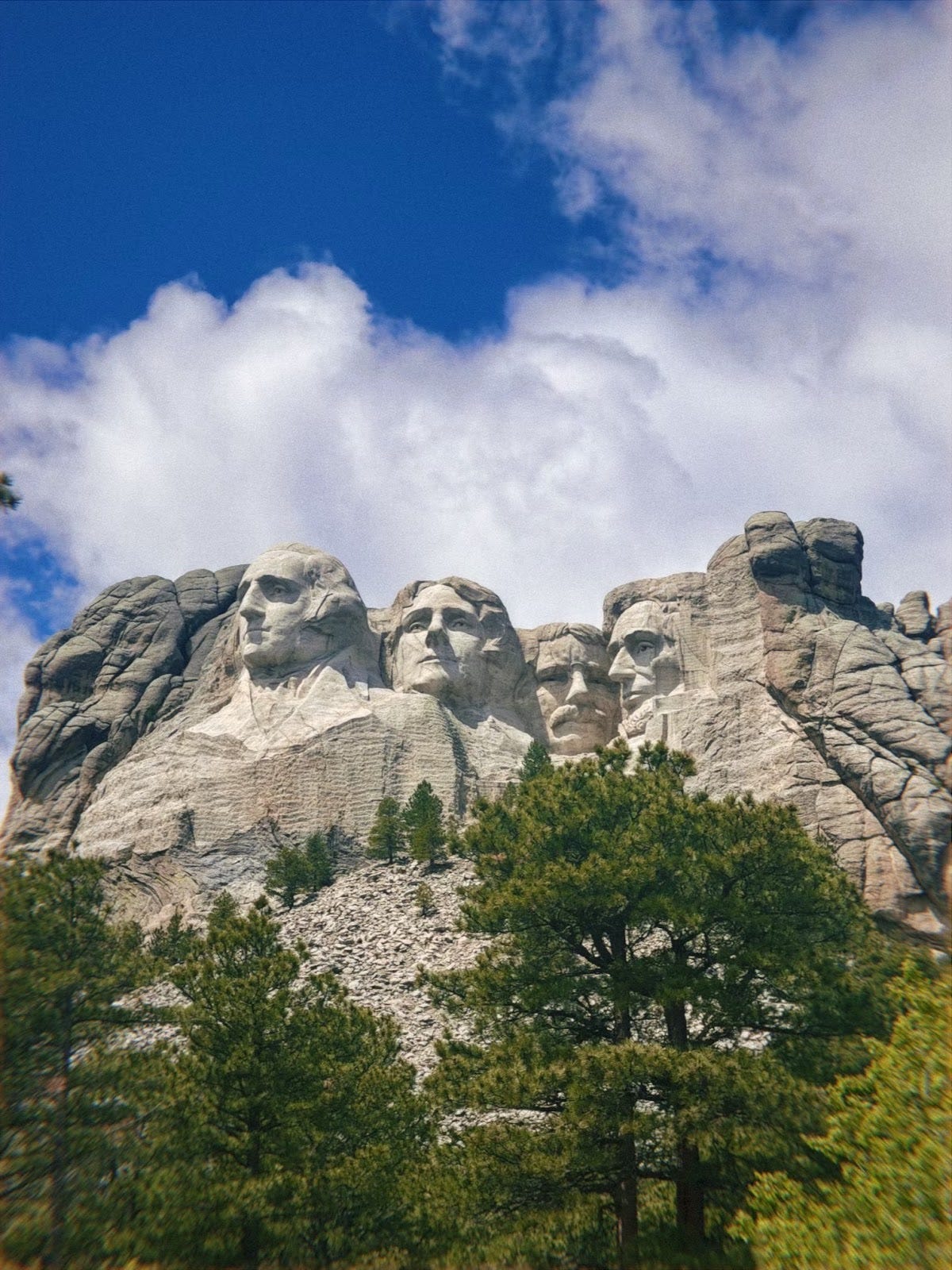
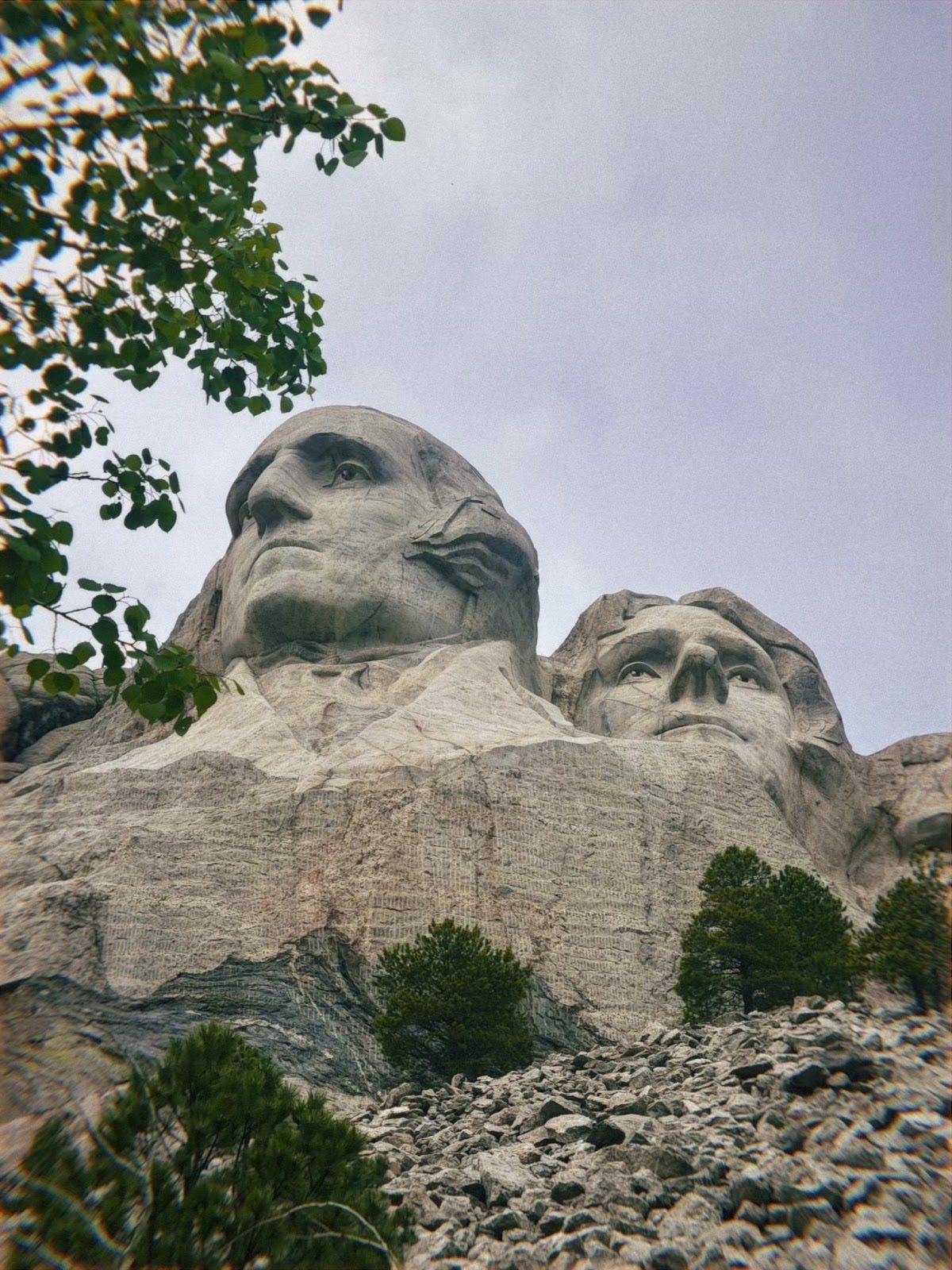

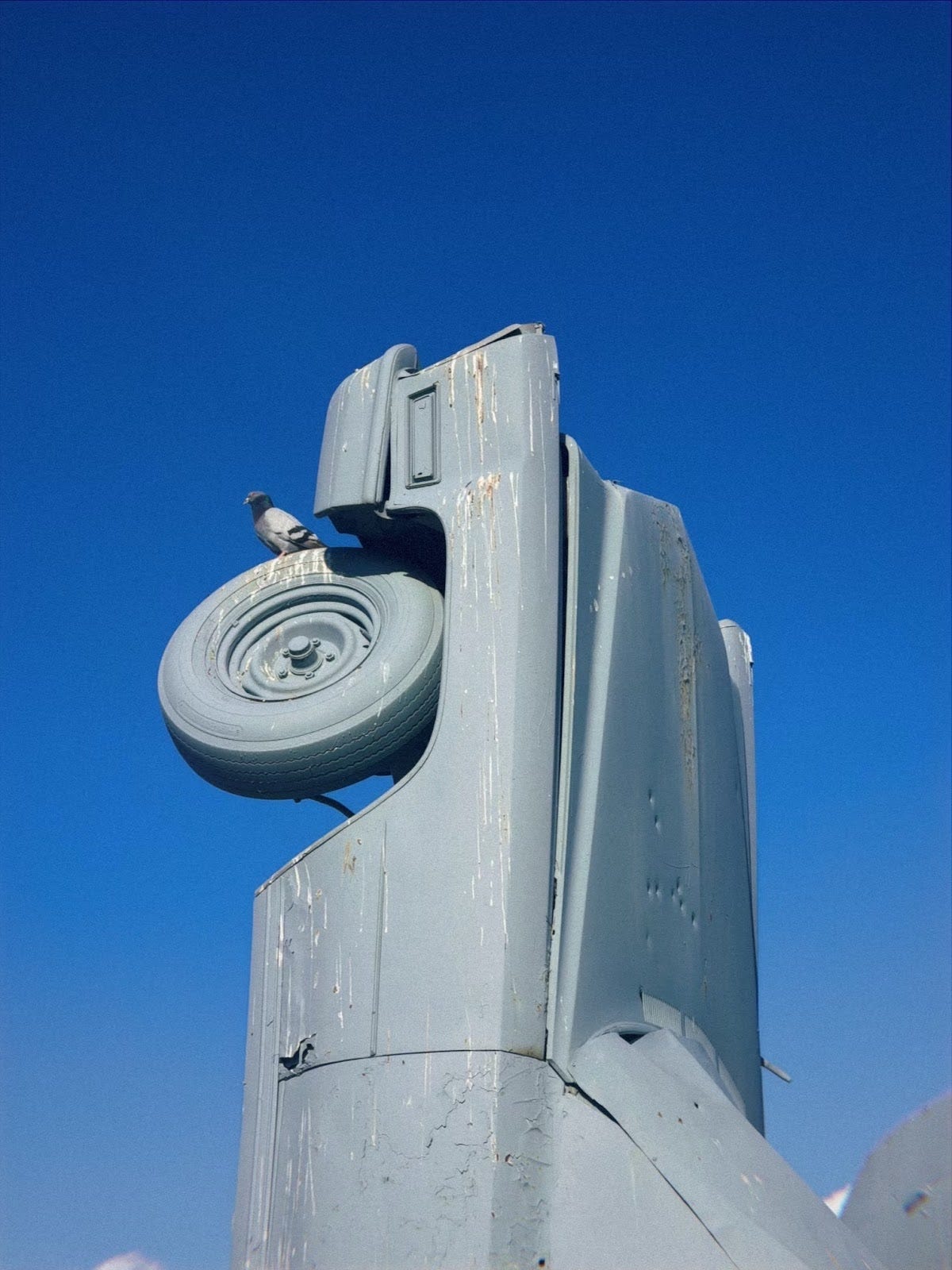
Love the trip coming to life in this!!!
Great thoughts about art and creation